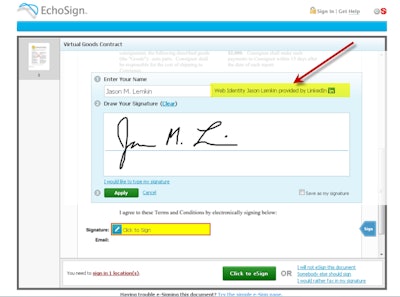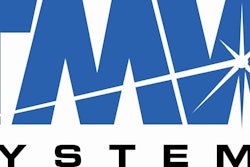
With this tentative agreement in place, you dispatch a truck and deliver the load. After sending the invoice, the customer bickers over the rate, fuel surcharge and accessorials and delays payment until the issue is resolved.
This situation could have been resolved quickly if the customer had signed a rate confirmation sheet. In an effort to please the customer, you skipped the process of obtaining a signature in person or by fax machine.
If you have ever experienced similar documentation problems, you’re not alone. Last year, management of the Celadon Group, one of the largest longhaul carriers in the nation, decided that getting rate contracts signed quickly was an area that needed improvement.
Like many carriers, Celadon uses Microsoft Excel and Word to create rate sheets and contracts. Its sales representatives were e-mailing files to customers directly from Celadon’s homegrown customer relationship management (CRM) system. The system kept a correspondence record of rates and acceptances.
“We used (e-mail) as a backing to a rate we gave out,” says Chad Hoffman, pricing manager for Celadon. What the company lacked was a process for capturing signatures in the same time frame. In many cases, sales representatives were delivering papers to customers in person and then e-mailing PDF images of the signed originals back to Celadon’s central office in Indianapolis.
This process took weeks, even months, to get rate contracts signed and fully executed. Last year, Mike Gabbei, Celadon’s chief information officer, saw a solution when he “e-signed” a contract with a technology supplier.
In January, 2011, Celadon began using the same technology from Palo Alto, Calif.-based EchoSign. Celadon is now able to e-mail, through EchoSign, the same Excel, Word and PDF files it was already using for contracts.
After logging in to the EchoSign website, a Celadon associate enters a customer’s e-mail address, uploads a contract and establishes a few parameters for where to initial and sign the document.
The customer receives an e-mail from EchoSign’s servers. The sender is the customer’s point of contact at Celadon. The e-mail appears to have come directly from Celadon by way of a company logo and other custom features. The customer simply clicks a link in the e-mail to enter a secure website and view a PDF version of the contract.
After clicking a button to agree to the terms, the customer types in his or her name. A signature font appears on the contract. Once the document is signed, the parties involved in the transaction receive a “fully executed” PDF document. Celadon saves the document in its imaging system without having to ever print or use paper again.
“This helps us get approval at the same speed, if not quicker, than e-mail. It provides more clear documentation of the official agreement,” Hoffman says.
EchoSign keeps a history of when the document was sent, signed for, and when the customer received the final PDF copy.
Celadon has received positive responses from customers since it started using EchoSign in January. The pricing department has sent out between 200 and 300 contracts for signature. Between 30 and 40 percent of its customers are signing contracts electronically.
The volume will continue to grow. In a typical bid season, Celadon responds to between 400 and 600 bids. On top of this, the pricing department responds daily to e-mails for quotes and rate addendums, Hoffman says. With EchoSign, the company can manage the signature process centrally, removing this responsibility from the sales force.
With rate contracts, fuel surcharges, and accessorials being signed and filed electronically, Hoffman expects to see a decrease in the amount of revenue that is written off due to invoice disagreements. The initiative should also improve efficiency of human resources and obviously reduce paper.
“Life is good from a documentation standpoint,” he says.












